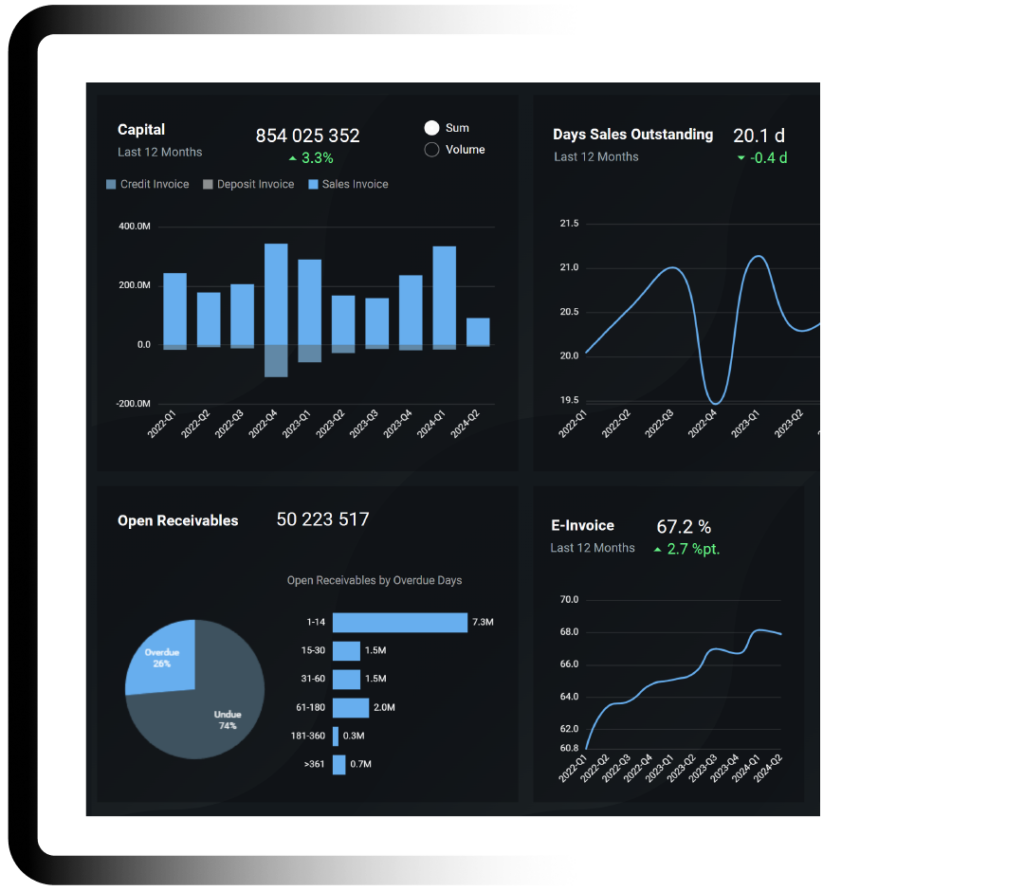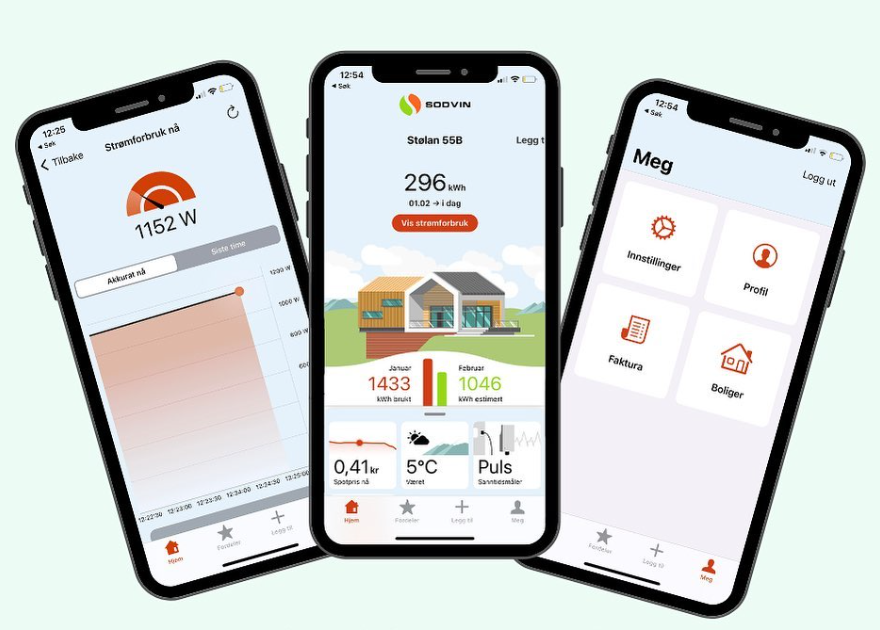What if your company could predict financial disruptions before they happen? In today’s competitive market, optimizing cash flow isn’t just a financial necessity – it’s a strategic advantage. Data analytics holds the key to unlocking hidden opportunities, streamlining financial processes, and staying ahead of payment delays. In this article, Niko Pylkkänen, Head of BI & Data at Ropo, shares actionable insights that can transform how your business handles financial operations – making uncertainty a thing of the past.
Data-driven cash flow management
Cash flow insights are essential for guiding strategic business decisions. Data analytics allows businesses to predict cash flow patterns, spot payment delays, and proactively mitigate risks. According to Pylkkänen, data isn’t just helpful – it’s essential:
“Transparency allows businesses to understand customer payment behavior, detect anomalies, and respond to growing delays. Without transparency, there is no control over the process, making it difficult to manage and monitor effectively,” he explains.
Especially in times of economic uncertainty, where demand fluctuates significantly across industries and an increasing number of businesses struggle with financial difficulties, monitoring customer payments and responding quickly to growing credit risks is more important than ever. Often, companies assess a customer’s creditworthiness only when a contract is initiated. However, long-term customers may also experience financial distress unexpectedly, making continuous risk assessment crucial.
Access to real-time essential data further enhances this approach, enabling businesses to make informed decisions as soon as new information becomes available and strengthening overall financial decision-making.
Proactive credit risk management
The first step in controlling credit risk is ensuring that the basics are in order. Keeping payment terms short helps minimize outstanding receivables, reducing credit risk while also accelerating cash flow. A payment term of a couple of weeks – or even shorter in B2B transactions – can be an effective target.
“A structured and automated payment monitoring system with reminders helps keep payment delays minimal and provides an early warning if payment issues arise,” Pylkkänen explains.
By combining a company’s own payment delay data with insights into general payment behavior and industry-wide credit risk trends, businesses can identify increasing credit risk even before it becomes visible in their overdue receivables. With the right tools, these changes can be actively highlighted, allowing businesses to react early and mitigate potential risks before they escalate.
Additionally, tracking key invoicing metrics at the right frequency ensures early detection of potential disruptions.

Essential KPIs for cash flow optimization: expert insights from Niko Pylkkänen
Understanding the right key performance indicators (KPIs) is crucial for improving cash flow management. By tracking the right metrics, businesses can proactively address risks, streamline invoicing, and enhance financial stability.
Pylkkänen highlights three essential KPIs every business should monitor:
- Days Sales Outstanding (DSO): This measures the efficiency of the invoicing and payment process, making areas for improvement visible. It also allows businesses to benchmark their cash turnover speed against similar companies in the industry.
- Payment Delays: Monitoring increasing delays and deviations from agreed payment schedules enables timely interventions and helps mitigate credit risk.
- Invoicing Digitalization Ratio: Digital invoices tend to get paid faster, improving cash flow predictability. Digital solutions also accelerate payments, reduce administrative workload, and lower invoicing costs.
By consistently tracking these KPIs, businesses gain actionable insights to improve cash flow efficiency and financial resilience.
Best practices for cash flow optimization
Consistent monitoring of payment behavior is essential for identifying potential risks and ensuring financial stability. While the optimal review frequency depends on the company and industry, monthly reviews are often the most suitable timeframe for effective credit risk and cash flow analysis.
Pylkkänen highlights that particular attention should be paid to increasing payment delays and invoices that have proceeded to debt collection. When customers’ payment behavior deteriorates, their credit rating should be reassessed, and their transactions should be monitored more closely. Companies can take proactive actions such as setting limits on outstanding receivables, increasing invoicing frequency, shorten payment term or requiring additional guarantees.
If a company follows a credit policy that defines credit limits for new customers, these limits should be adjusted accordingly if a customer’s credit rating changes, as increased credit risk may impact cash flow.
By systematically tracking payment delays and adjusting credit limits based on real-time data, businesses can strengthen their cash flow resilience and mitigate financial risks before they escalate.
Practical strategies for strengthening cash flow
According to Pylkkänen, a combination of optimized invoicing processes, proactive payment monitoring, and the use of digital tools can significantly enhance cash flow performance. He highlights the following key principles:
- Keep payment terms as short as possible and maintain a fast invoicing cycle.
- Provide flexibility to key customer segments and financially stable partners when needed, but long payment terms should be a carefully considered exception rather than the norm.
- Monitor payment delays proactively. Tracking increased credit risk and growing payment delays helps prevent disruptions. “Recognizing increased risk quickly allows for prompt corrective measures,” Pylkkänen explains. By combining external payment and risk data with internal monitoring, businesses can gain a more comprehensive understanding of a customer’s financial situation.
A fast cash flow cycle combined with accurate cash forecasting reduces working capital requirements and leads to concrete financial savings. Forecasting accuracy can be significantly improved by analyzing customer payment history, and effective tools are available to facilitate this process.

Niko Pylkkänen
Head of BI & Data at Ropo.
How Ropo helps implement these practices
Ropo One™ brings together all invoicing workflows in a single platform, supporting businesses in:
- Unifying all invoice-related workflows for full visibility, enabling a seamless overview of cash flow and outstanding receivables.
- Enhancing forecasting accuracy, allowing businesses to anticipate cash flow fluctuations and make data-driven decisions proactively.
- Enabling customized invoicing strategies for each customer segment, optimizing payment terms and collection processes based on customer reliability.
According to Pylkkänen, data-driven insights are essential for maintaining control over cash flow processes. Solutions like Ropo One™ can support businesses in structuring and managing these processes more effectively, ensuring proactive risk mitigation.
Ropo’s experts are here to support you whenever you need assistance optimizing your invoicing processes and cash flow management for improved control, efficiency, and transparency.
Reach out to your local sales team or continue exploring our one-platform approach here:
Read more

Client stories
Ropo Signs Agreement with Sodvin for a Fully Integrated Invoicing Solution
Read more
Life at Ropo
Meet Moona: From Fashion Blogging to Coding – Curiosity Opened the Door
Read more
Insights & Trends
3 Days Faster Cash Conversion with Process Improvements
Read more
Insights & Trends

 Login: Finland
Login: Finland